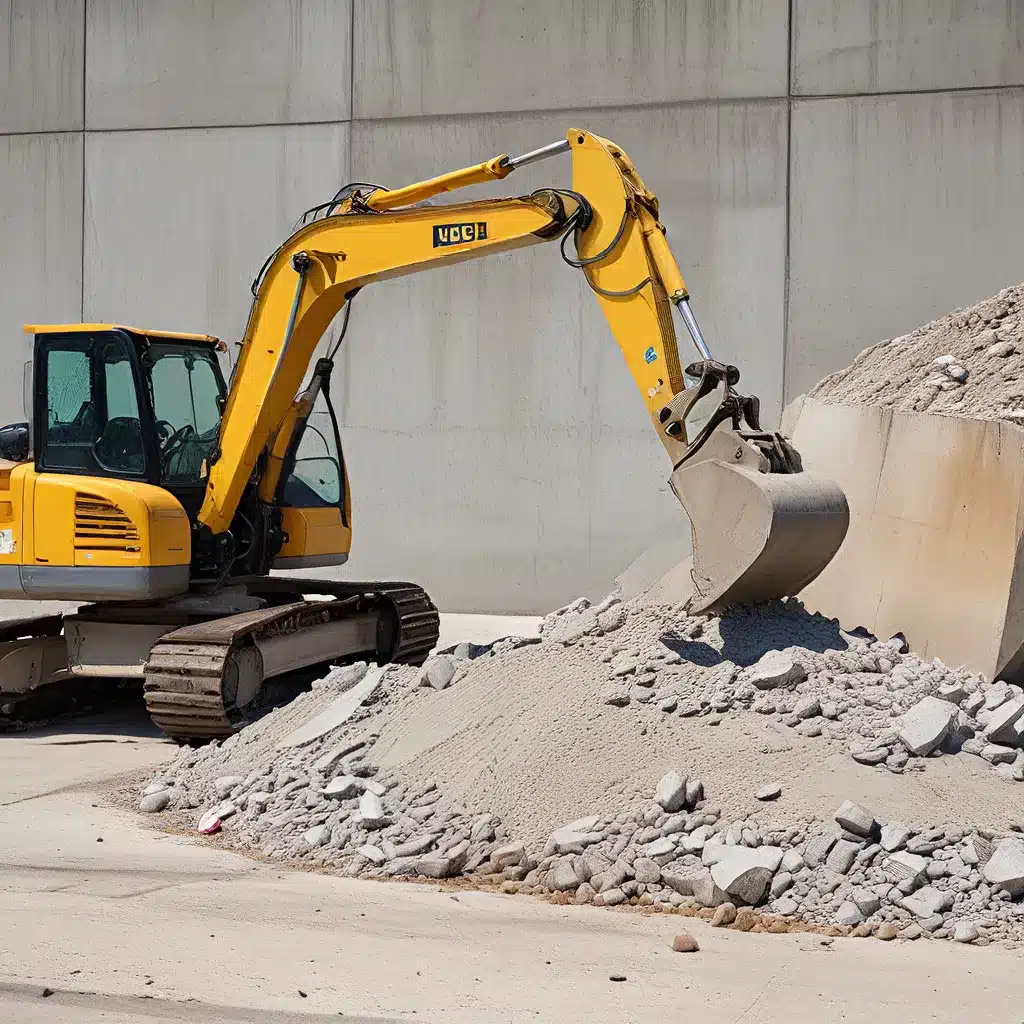
Concrete Demolition and Recycling: Sustainable Practices
Ah, the world of concrete – that ubiquitous material that forms the backbone of our built environment. But what happens when these concrete structures reach the end of their lifespan? Do we simply demolish them and send the debris to the landfill? Surely, there must be a more sustainable approach, right?
Well, my friends, let me tell you about the fascinating world of concrete demolition and recycling. This is a journey that not only saves valuable resources but also helps us build a greener future. So, grab a cup of coffee, get comfortable, and let’s dive into the world of sustainable concrete practices.
The Concrete Conundrum
Concrete is one of the most widely used construction materials in the world, and for good reason. It’s durable, versatile, and relatively inexpensive. But as our cities and infrastructure continue to grow, we’re faced with a growing challenge: what to do with all the concrete that needs to be demolished?
According to the EPA, construction and demolition (CD) materials, including concrete, constitute a significant waste stream in the United States. In fact, the EPA estimates that in 2018, a staggering 136 million tons of building-related CD materials were generated. That’s enough to fill the Grand Canyon twice over!
The traditional approach to dealing with this waste has been to simply send it to landfills. But as we all know, landfills are finite resources, and this method is neither sustainable nor environmentally friendly. That’s where the concept of concrete demolition and recycling comes into play.
The Sustainable Shift
Imagine a world where we could take that old concrete and turn it into something new and useful. Well, that’s exactly what the concept of sustainable concrete practices is all about. By embracing the principles of Sustainable Materials Management (SMM), we can divert these CD materials from landfills and give them a new lease on life.
One of the key strategies in this sustainable approach is source reduction. This involves finding ways to minimize the amount of CD materials generated in the first place. For example, by preserving existing buildings instead of demolishing them, or by designing new structures with adaptability and disassembly in mind, we can reduce the overall waste stream.
But what about the concrete that’s already been demolished? That’s where the magic of deconstruction comes into play. Deconstruction is the process of carefully dismantling buildings to salvage components for reuse and recycling. This not only saves valuable materials but also reduces the energy and resources needed to produce new ones.
Concrete Recycling: A Treasure Trove of Possibilities
Once the concrete has been carefully deconstructed, the next step is to recycle it. And let me tell you, the possibilities are endless! According to the EPA, the major benefit of recycling CD materials is the resource and energy savings that come from reducing the production of new materials.
For example, concrete can be crushed and used as a substitute for traditional gravel in new concrete mixes or as a base material for roads and other infrastructure. Wood can be recycled into engineered-wood products, mulch, or compost. Even metals like steel, copper, and brass can be reclaimed and reused.
But the benefits of concrete recycling go beyond just saving resources. It also helps reduce the environmental impact of landfilling these materials. As the Metro Waste Authority notes, properly managing and recycling CD materials can prevent them from ending up in landfills, where they can release harmful chemicals and contribute to greenhouse gas emissions.
The Concrete Recycling Revolution
Now, I know what you might be thinking: “Concrete recycling? That sounds like a lot of work!” And you’d be right – it does take some effort. But the payoff is well worth it, both for the environment and for your bottom line.
Recent research has shown that the economic benefits of concrete recycling can be significant, with cost savings of up to 30% compared to traditional disposal methods. And when you factor in the environmental benefits, it’s a no-brainer.
So, how do you get started? The first step is to understand the recycling options in your area. As the EPA suggests, it’s important to ask your recycler about their compliance with regulations and certifications to ensure your materials are being properly managed.
Once you’ve found a reliable recycler, the next step is to incorporate concrete recycling into your demolition and construction processes. This might involve things like setting up designated areas for sorting and storing recyclable materials, or working with your contractors to ensure they’re following best practices for deconstruction and recycling.
Building a Greener Future, One Concrete Step at a Time
As I reflect on the journey of sustainable concrete practices, I can’t help but feel a sense of excitement and optimism. By embracing the principles of source reduction, deconstruction, and recycling, we have the power to transform the way we think about and manage our built environment.
Imagine a world where our cities and infrastructure are built with longevity and adaptability in mind, where demolished concrete is seen as a valuable resource rather than waste, and where every project contributes to a greener, more sustainable future. It’s a future that’s within our reach, and it all starts with a single concrete step.
So, what are you waiting for? Head on over to Concrete R Us and let’s start building a better tomorrow, one concrete project at a time.

